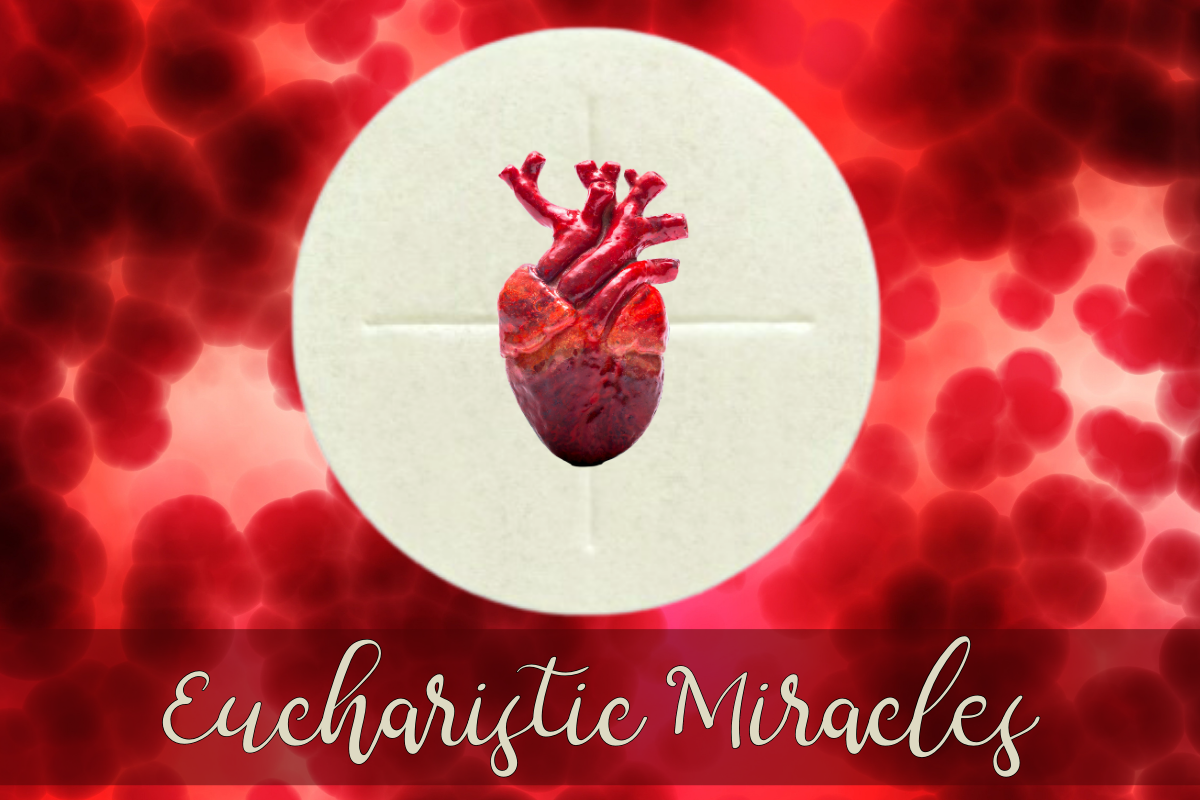The Catholic Church and several other Christian denominations support that Jesus Christ is really, truly, and substantially present in the Eucharist under the appearance of bread and wine. Saint John Damascene observes: “The bread and wine are not a foreshadowing of the body and blood of Christ–By no means!–but the actual deified body of the Lord, because the Lord Himself said: ‘This is my body’; not ‘a foreshadowing of my body’ but ‘my body,’ and not ‘a foreshadowing of my blood’ but ‘my blood.'” This presence of the body, blood, soul, and divinity of Jesus Christ in the Blessed Sacrament is a mystery and a miracle that we celebrate at every Catholic Mass.
“By the consecration of the bread and wine there takes place a change of the whole substance of the bread into the substance of the body of Christ our Lord and of the whole substance of the wine into the substance of his blood,” teaches the Catechism of the Catholic Church. “This change the holy Catholic Church has fittingly and properly called transubstantiation” (CCC 1376).
Sadly, a February 2019 study by the Pew Research Center indicates that only one-third of Catholics in the United States agree with the Church teaching on transubstantiation.* Saint Bonaventure notes: “There is no difficulty over Christ’s being present in the sacrament as in a sign; the great difficulty is in the fact that He is really in the sacrament, as He is in heaven. And so believing this is especially meritorious.”
In addition to the “daily” miracle that is the Eucharist, God gives us extraordinary private revelations about unexplainable phenomena involving the Eucharist that can only be attributed to divine power. Throughout the ages and all over the world, over 100 of these wonders are approved by the authority of the Church to aid in the strengthening of our faith and for our ongoing devotion.
Although these Eucharistic miracles vary, many similarities exist. Some miracles include consecrated Hosts that bleed, transform into myocardial tissue, reveal the face of Jesus, remain incorruptible over extended periods of time, survive harsh elements, withstand attacks, sustain life, multiply, levitate, and relocate. The Church prudently investigates these supernatural happenings through special commissions or task forces to determine authenticity. In the past century, extensive scientific analyses are also included in their studies.
“Our faith is not founded on Eucharistic miracles, but on the proclamation of the Lord Jesus, received with faith through the action of the Holy Spirit,” explains the Most Reverend Monsignor Raffaello Martinelli. Therefore, we are not obliged to believe any of these events. However, he states, “Eucharistic miracles can encourage us to understand, appreciate, and love the Eucharist…They can help a person discover the mystery, the beauty, and the riches of the Eucharist.”
This month, please visit our “Weekly Challenge” section to explore several types of Eucharistic miracles and reflect upon how these private revelations can help us imitate our Eucharistic Lord. Please comment on your experiences with the Blessed Sacrament and the signs that have strengthened your belief in the Real Presence.
*Since the time of this post, a new study published in September 2023 by Georgetown’s Center for Applied Research in the Apostolate (CARA) indicates that 64% of adult Catholics in the United States believe in the real presence of Jesus in the Eucharist. However, the study also notes significant confusion regarding the Church’s teaching about the Eucharist.




I think I have found what i need jow